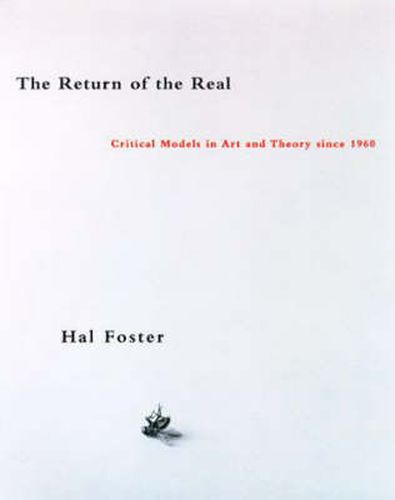Readings Newsletter
Become a Readings Member to make your shopping experience even easier.
Sign in or sign up for free!
You’re not far away from qualifying for FREE standard shipping within Australia
You’ve qualified for FREE standard shipping within Australia
The cart is loading…






After the dominant models of art-as-text in the 1970s and art-as-simulacrum in the 1980s, Hal Foster argues that in the 1990s, we are now witness to a return to the real - to art and theory that seek to be grounded in bodies and sites, identities and communities. Foster’s concise analysis of art practices over the past three decades traces important models at work in art and theory, with special attention to the controversial connections between the two during this period. It also focuses on the relation between prewar and postwar avant-gardes: how does the return of a past practice affect the development of a present one? The result is a genealogy of art and theory from minimalism and pop to the present. Chapters can be read independently, although Foster interrelates practices of sometimes disparate time periods and methodologies. Foster disputes the common assumption that contemporary art is only redundant, belated or condemned to pastiche. On the contrary, he suggests that the avant-garde always returns to us from the future , repositioned by innovative practice in the present. And he poses this retroactive mode of art and theory against the reactionary undoing of progressive culture that is so pervasive today. If The Return of the Real begins with a narrative of the historical avant-garde, it concludes with a reading of our contemporary situation - and what it portends for future practices of art and theory, culture and politics.
$9.00 standard shipping within Australia
FREE standard shipping within Australia for orders over $100.00
Express & International shipping calculated at checkout
After the dominant models of art-as-text in the 1970s and art-as-simulacrum in the 1980s, Hal Foster argues that in the 1990s, we are now witness to a return to the real - to art and theory that seek to be grounded in bodies and sites, identities and communities. Foster’s concise analysis of art practices over the past three decades traces important models at work in art and theory, with special attention to the controversial connections between the two during this period. It also focuses on the relation between prewar and postwar avant-gardes: how does the return of a past practice affect the development of a present one? The result is a genealogy of art and theory from minimalism and pop to the present. Chapters can be read independently, although Foster interrelates practices of sometimes disparate time periods and methodologies. Foster disputes the common assumption that contemporary art is only redundant, belated or condemned to pastiche. On the contrary, he suggests that the avant-garde always returns to us from the future , repositioned by innovative practice in the present. And he poses this retroactive mode of art and theory against the reactionary undoing of progressive culture that is so pervasive today. If The Return of the Real begins with a narrative of the historical avant-garde, it concludes with a reading of our contemporary situation - and what it portends for future practices of art and theory, culture and politics.